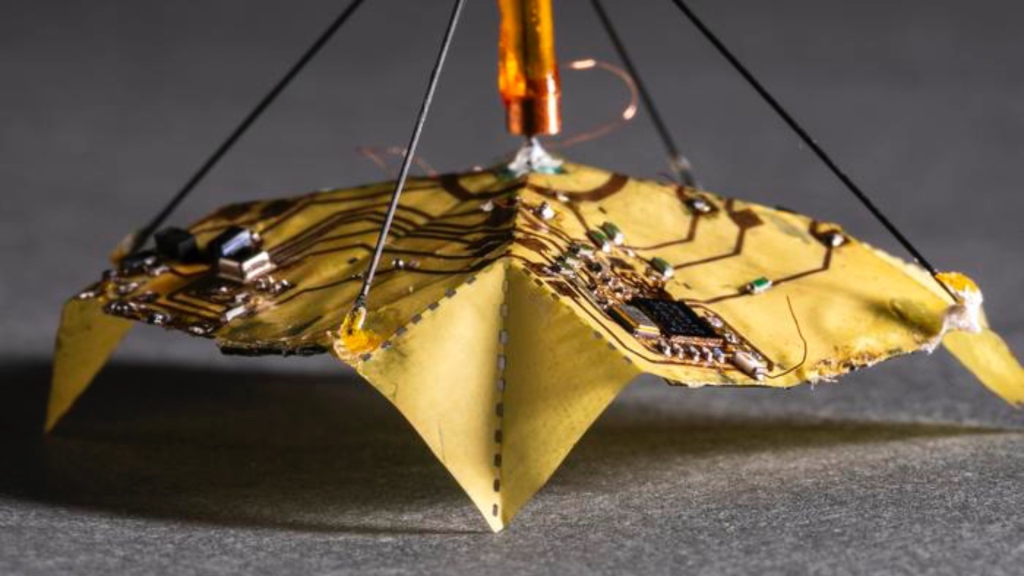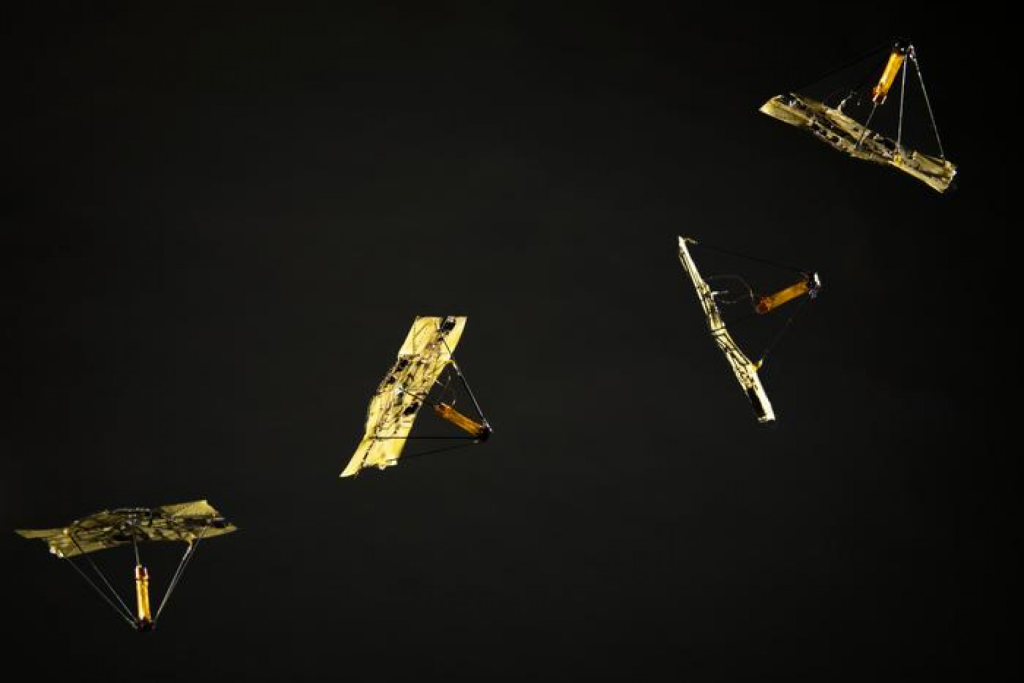Engineers have unveiled a groundbreaking innovation that promises to revolutionize the way we collect environmental data and conduct atmospheric surveys. This marvel of technology is a lightweight robotic device capable of changing shape mid-air, and it operates without the need for batteries.
These incredible shape-changing “microfliers” were designed with inspiration from origami, a Japanese paper-folding art. When released from drones, their unique design allows them to swiftly ascend to altitudes of up to 131 feet above the ground, all while weighing a mere 400 milligrams, making them lighter than a typical nail.
The primary components of these remarkable microfliers include a battery-free actuator, a solar power-harvesting system, and a controller responsible for initiating shape alterations during flight. As they descend, the integrated electromagnetic actuators enable them to transition from a flat configuration to a creased one, emulating the flight patterns of various types of leaves.

“Such microfliers could automate the deployment of large-scale wireless sensor networks for environmental monitoring,” say the authors of the project. These devices are equipped with advanced Bluetooth functionality, allowing them to rapidly transmit atmospheric information such as air temperature and pressure. Even under mild wind conditions, they can cover impressive distances, similar to the size of a football field.
During outdoor testing, the microfliers demonstrated their capabilities by traveling up to 98 meters after shape-changing upon release from drones. They successfully transmitted data to Bluetooth receivers as far as 60 meters away.
Currently, these microfliers can transition in one direction, from a tumbling state to a falling state. However, researchers plan to develop future versions that can transition in both directions, facilitating more precise landings, even in turbulent conditions. These advanced devices will also be equipped with miniature sensors to collect data on variables such as temperature, humidity, and air quality.

This technology has enormous potential for environmental research. Small drones that are fitted with a variety of sensors and equipment have proven to be quite useful for gathering information on the Earth’s atmosphere. These shape-changing microfliers are poised to play a key role in improving our awareness of the environment and the world around us thanks to ongoing developments in sensor technology and autonomous navigation.
These cutting-edge microfliers have the potential to revolutionize how we do environmental research, monitor air quality, and gather crucial atmospheric data, ultimately leading to a deeper comprehension of the constantly changing conditions on our planet.


